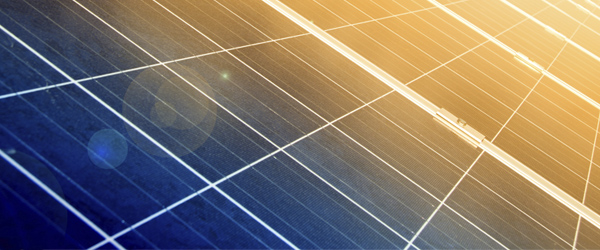Community Solar Program Expands Access to Renewable Energy

The following article recently published in The Daily Record. You can access the original article on The Daily Record's website here.
In April, Maryland Gov. Wes Moore announced an ambitious plan to achieve 100 percent clean energy by 2035 — positioning Maryland to become one of the greenest states in the nation.
Achieving this goal requires a multifaceted approach, including increased utilization of renewable energy sources to power homes and businesses. One of the most common ways for homeowners to adopt clean energy is through the use of solar panels installed on their homes. But solar may not be an option for renters, those who live in condos or apartment complexes, homes that are too shaded, or roofs that are not suited for a solar panel installation.
IGS Energy’s community solar program aims to solve this problem by making clean energy accessible to more residential customers. In a community solar program, a large solar array is constructed in an area where energy demand is high. The power generated is pushed into the local power grid, and the utility company applies a monetary value to the energy produced, commonly known as “solar credits”. Residents subscribe to the project and receive a portion of those credits as a discount on their energy bill.
"There is the opportunity to save as much as 10 percent on your monthly electricity bill," explains Katie Rever, IGS Energy’s director of legislative and regulatory affairs. "However, the program is limited to just 6,000 slots right now. The arrays are being constructed over the next few months, and we encourage people to call and reserve their space in the program."
IGS provides renewable energy to homes and businesses through green electricity, carbon-neutral natural gas and rooftop solar. Now, through the Maryland Community Solar Program, they are providing Maryland residents with access to clean solar energy created on local solar farms.
Subscribers pay a monthly fee to IGS, which is based on their average monthly electric usage — essentially they are purchasing a portion of the power produced by the solar array. That fee is offset by solar credits applied to their BGE bill, automatically calculated by their subscription with IGS. Because community solar is designed to deliver power to the local grid, the subscription is attached to the resident’s meter number, not their name. If they relocate, the subscription will not move with them. Currently, community solar is not available for businesses.
Choosing to participate in a community solar program allows for investment in future community solar projects, creating new jobs in everything from building and maintaining the solar fields, to selling, managing, and distributing the energy to customers.
While subscribers are not actually getting solar power delivered to their homes, they are supporting the delivery of solar power to the energy grid. This reduces overall reliance on fossil fuels and promotes the resilience of the energy grid, especially during peak usage periods.
Rever explained that until now, electricity generation has always been centralized. Huge power plants produce the majority of energy and distribute it to large areas. Not only is this less efficient, but it means millions of users are impacted when power is disrupted by damage from powerful storms or usage surges in response to extreme weather. Problems with an aging and vulnerable grid can be catastrophic, and community solar is one way to offer some protection.
By spreading electricity generation across multiple smaller solar farms, the entire system is able to be more nimble and responsive to fluctuations in demand. Even with electric vehicles increasing the need for power, Rever maintained that solar can, and will, evolve to meet the future demand.
"Solar has been the tip of the spear," said Rever. "It is no longer a question of will the electricity grid of the future be powered by solar, but how will it happen." Already the cost to generate solar energy has dropped dramatically due to advances in technology, and emerging technologies like smart thermostats and development of new energy storage will continue to accelerate this transition.
"Storage helps smooth out peak usage periods,” Rever explained. “The next wave of solar will be figuring out the technology and business models to support that future, such as solar plus smart technologies, solar plus EVs, but these are challenges in a good way."
Rever is optimistic as she considers the future of renewable energy.
"Working with energy transition was how I wanted to dedicate my career to improving the environment," said Rever. "How do we create a sustainable energy future with consideration of the needs of all stakeholders? IGS is very dedicated to renewables as the future, and we are committed to getting there as a business and a society."
Learn more about community solar here.